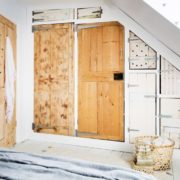How is the building oriented? Ideally, the living rooms (living room, dining room) are to the south to take advantage of the heat of the sun. The rooms can be located on the north side because they are less heated. We also look to see if shading (trees, buildings, walls, etc.) can prevent the sun from entering the house.
Town planning
Are there particular urban planning constraints in the district or in the municipality? (Example: imposed materials or roof overhang) Are there any easements? Constraints linked to joint ownership? Are there specific renovation aids, especially energy?
State of the building
In what condition are the roof, the heating system, the electrical installation, the sanitary facilities, the bay windows? Are there any humidity issues? What are the load-bearing walls? What are the building’s current heating needs? The compulsory PEB certificate gives an estimate of the annual heating needs.
Specify a maximum budget
Equity
It is prudent not to devote 100% of your savings to purchases and works. How much of the savings to allocate to it? Are there other major expenses to plan for in the years to come?
The borrowing capacity
It is essentially determined by the monthly income of the buyer (s). A meeting with your banker is required to determine the maximum borrowing capacity.
It is the addition of the own funds intended for the site and the borrowing capacity that determines the maximum renovation budget. There is also a safety margin.
Draw the living spaces
What living spaces do we need (bedrooms, office, etc.) now and in the future? Where should they be ideally located? Will it be necessary to tear down walls or create new partitions? Is circulation in the house easy? Do the bay windows provide the necessary light? We will take the time to draw sketches to the scale of each floor.
Isolate, it’s now or never
Renovation work is a unique opportunity to optimize the insulation of the house. The heavier the renovation, the lower the proportion of costs associated with insulation. You might as well be ambitious, it will quickly pay off.
The interest is threefold:
The environment
Heating represents 65% of the energy consumption of an average home. This has a significant impact on climate change and the gradual depletion of fossil resources. Insulating homes reduces CO 2 emissions.
Comfort and well-being
A well-insulated home is more comfortable:
There are less drafts, the comfort temperature is reached faster and the walls are warmer.
Aiming for a low-energy or even passive renovation makes it possible to reduce the energy bill each year and to make significant savings in the long term.
To achieve an ambitious energy goal, the work must cover almost the entire envelope of the house:
- insulation of floors, walls, roof
- replacement of glazing, drilling of new windows
- reduction of thermal bridges
- improved airtightness
- possible installation of mechanical ventilation with heat recovery
Project yourself into the works
What work do you need to do to meet your goals? How to phase the work? Will they all be professionally made or will you get your hands dirty? Will the house be occupied during the works?
Estimate the costs
The costs of the renovation vary greatly depending on the condition of the building, the project and energy ambition, as well as the choice of materials. They range from a few hundred euros per square meter for a light renovation to over 1000$ / m² for a heavy renovation. Quotations can be requested from contractors or estimates from the architect if his intervention is necessary within the framework of a permit application.
SGHomeNeeds is a home services platform in Singapore , you can check out the best reviewed companies in services like renovation, interior design and handymen. You can also find licensed electricians, plumbers, and get quotations for every service you can find today.







Comments